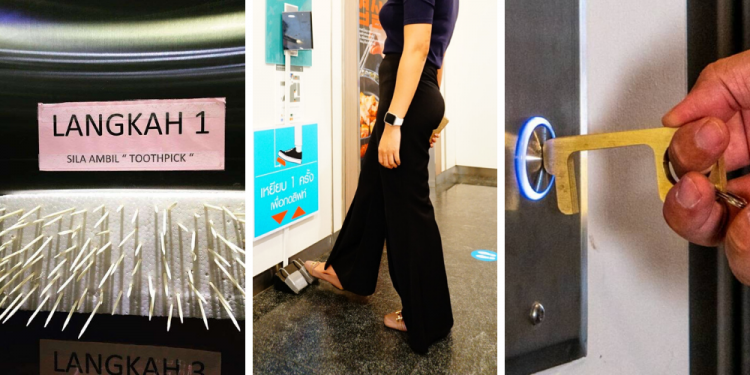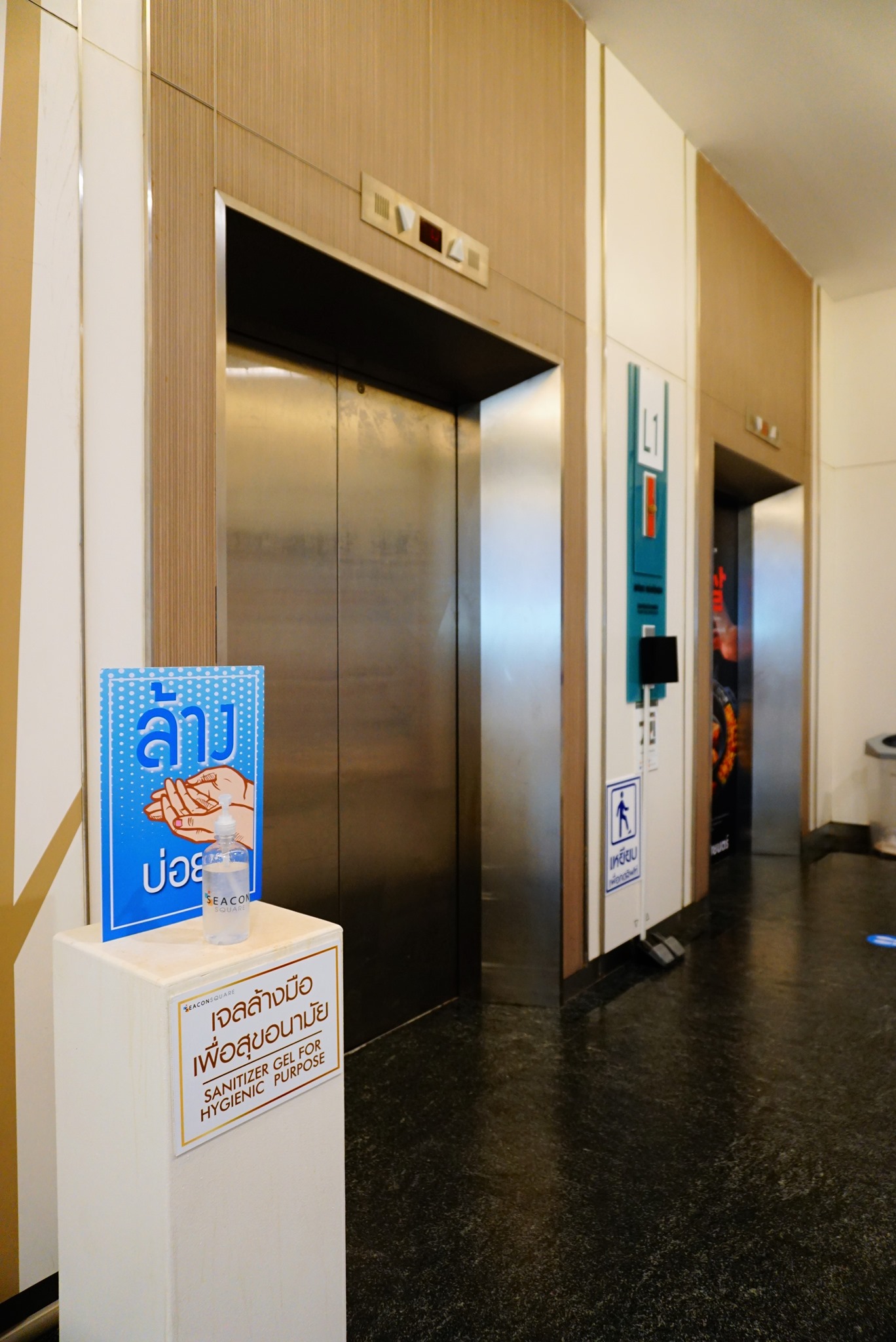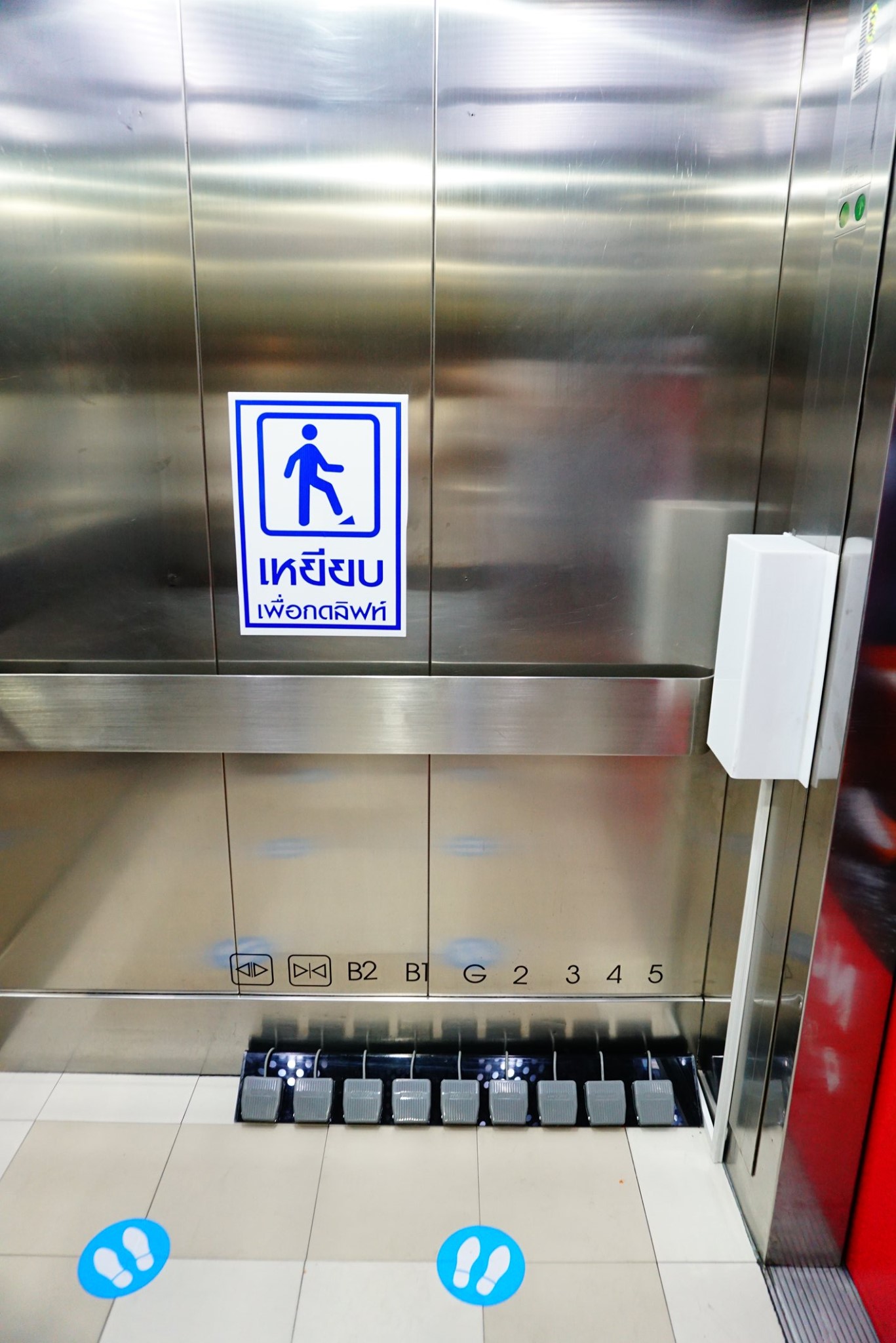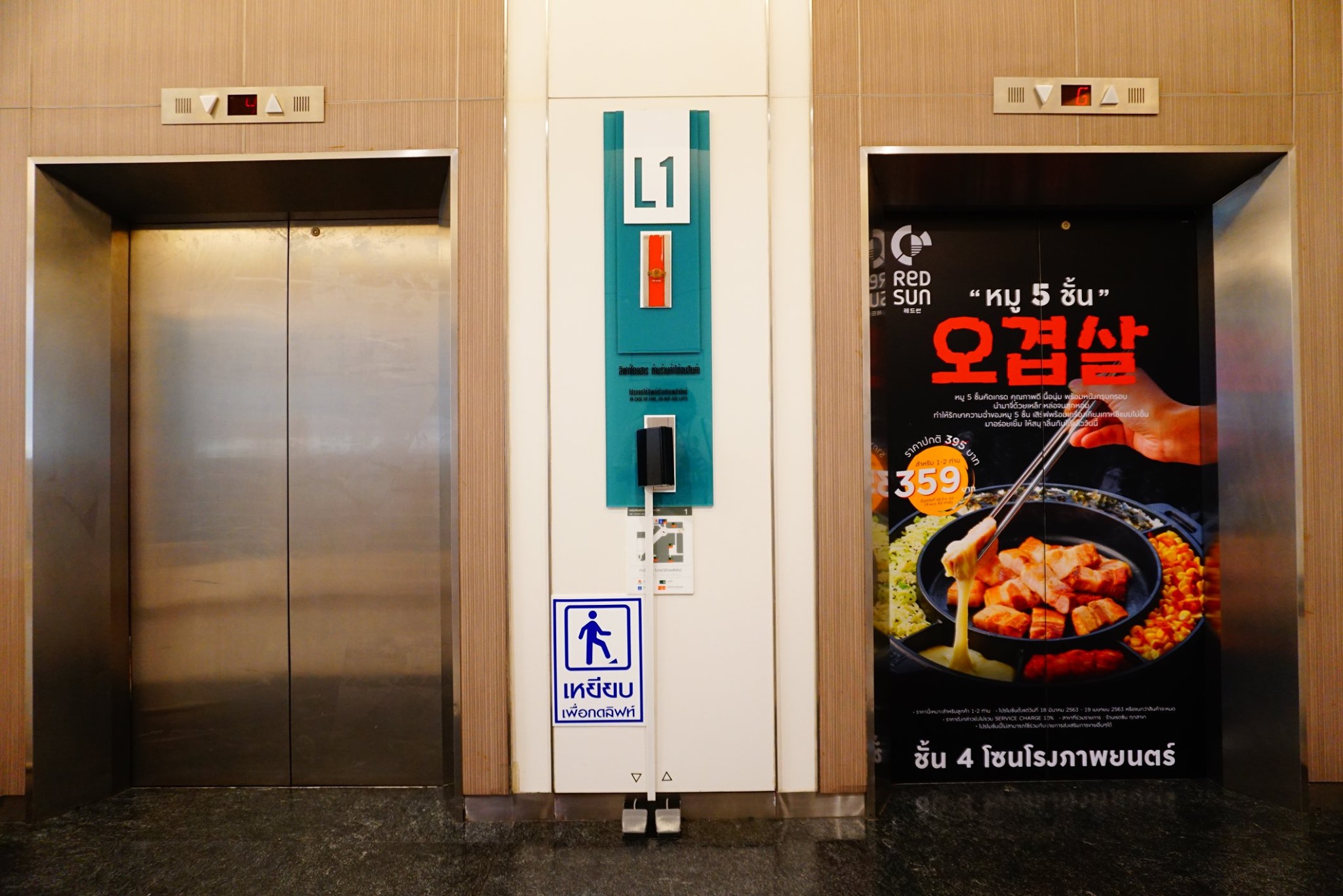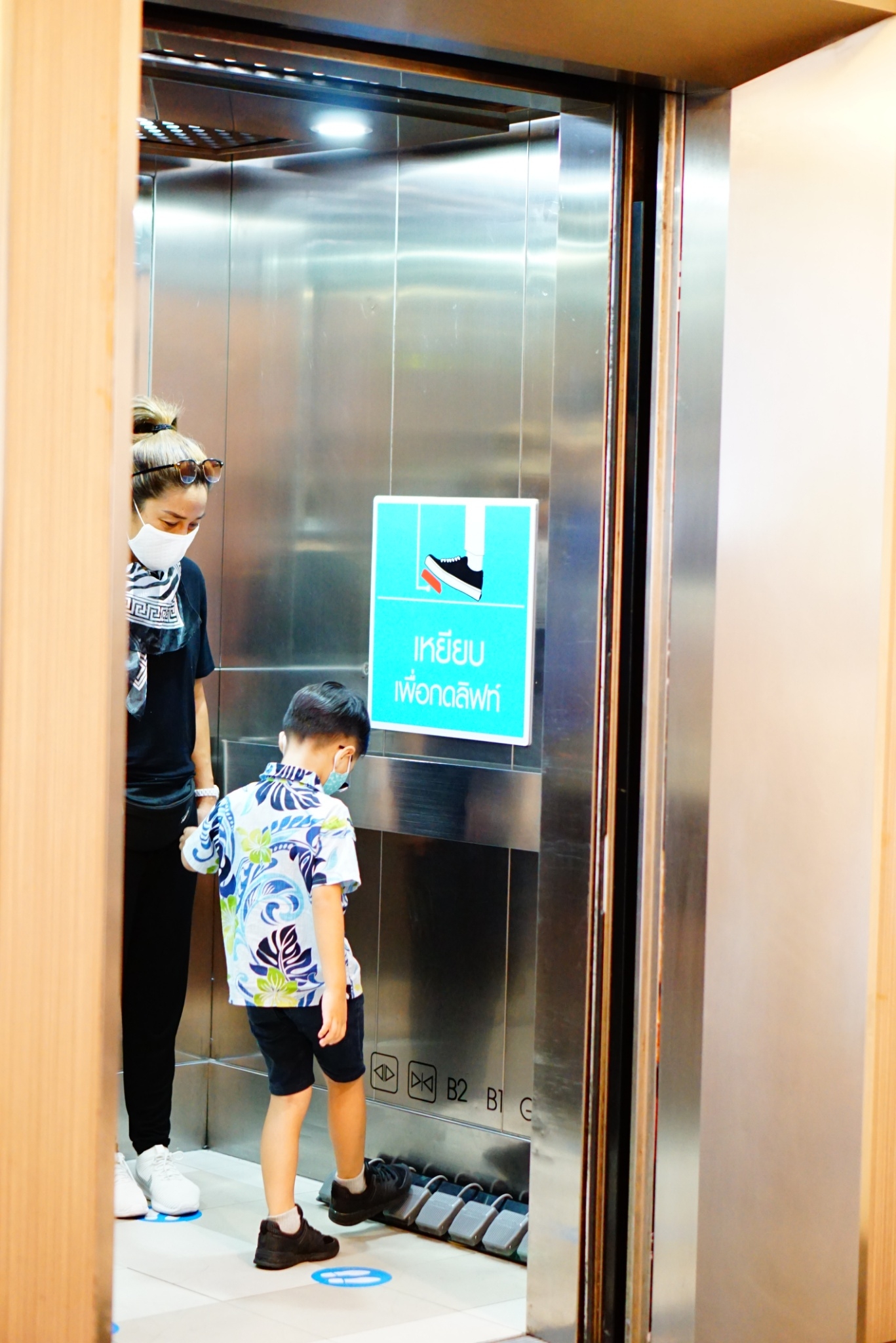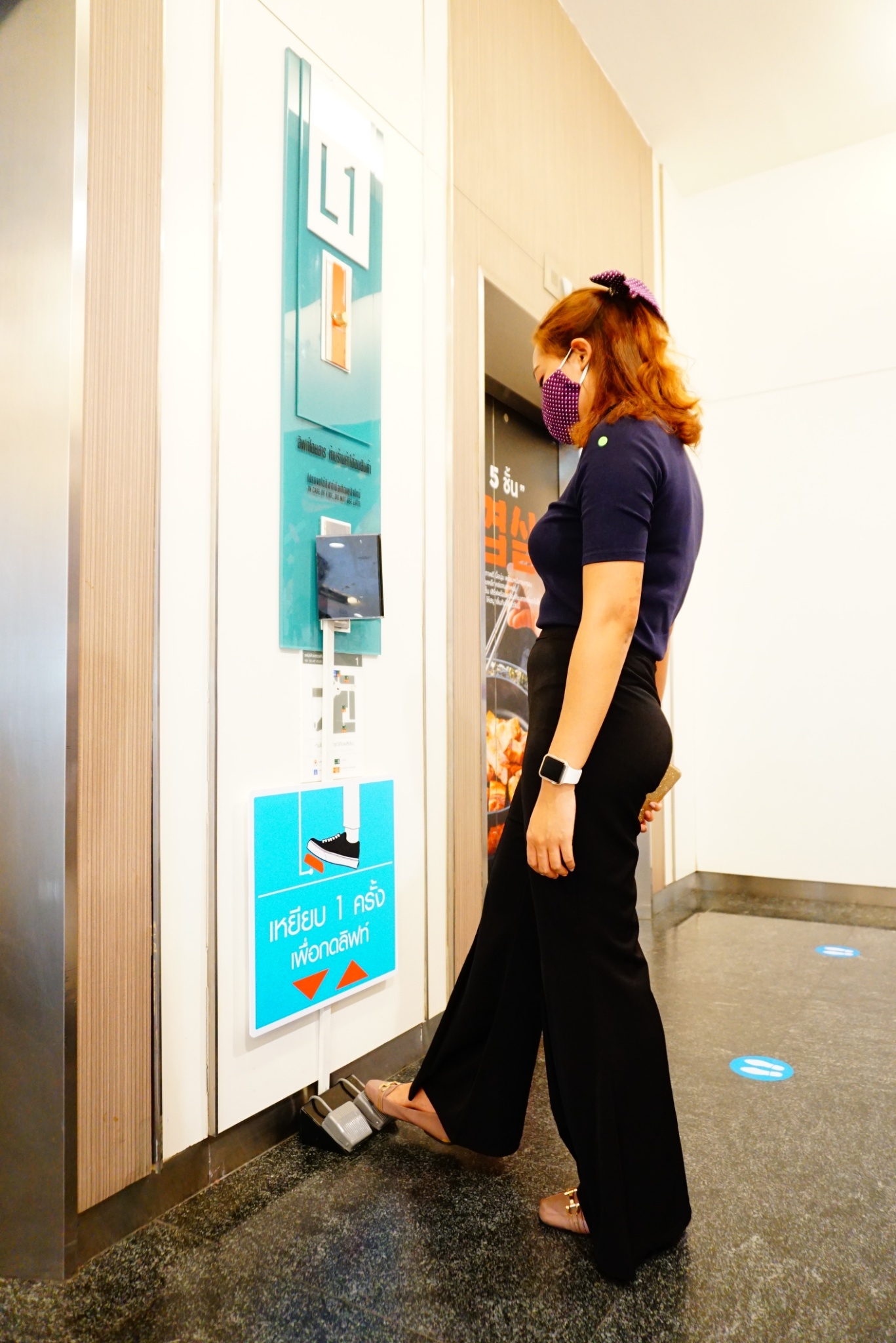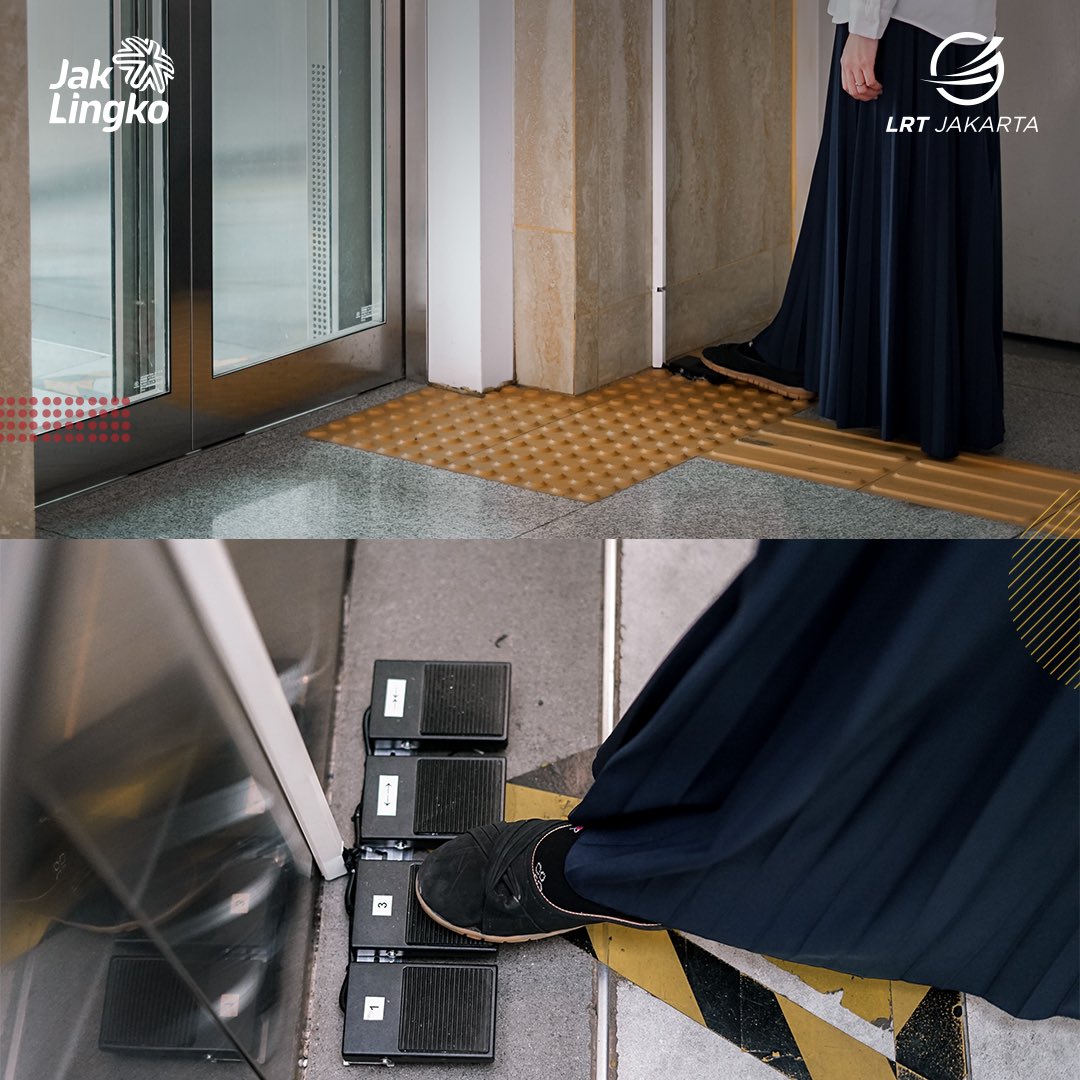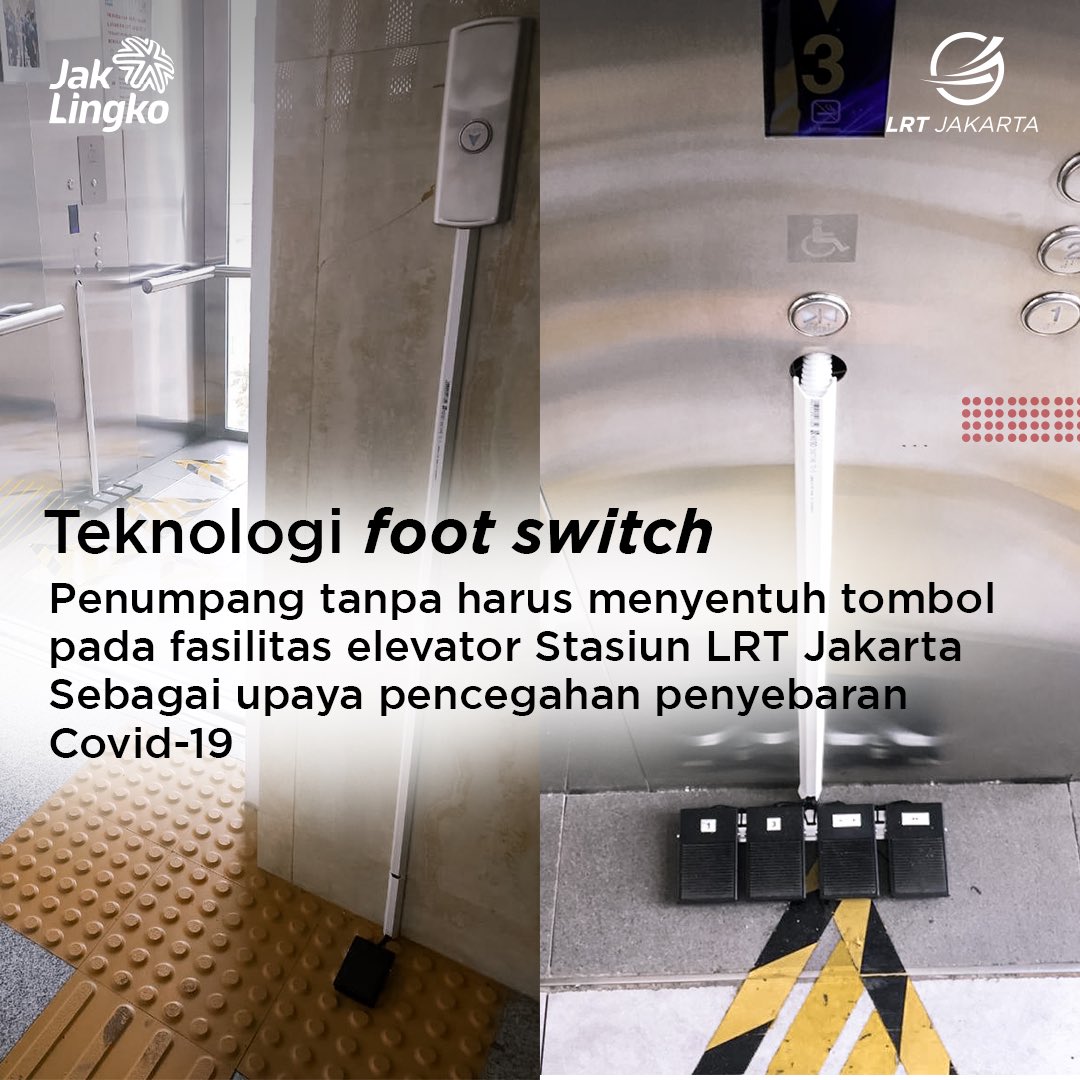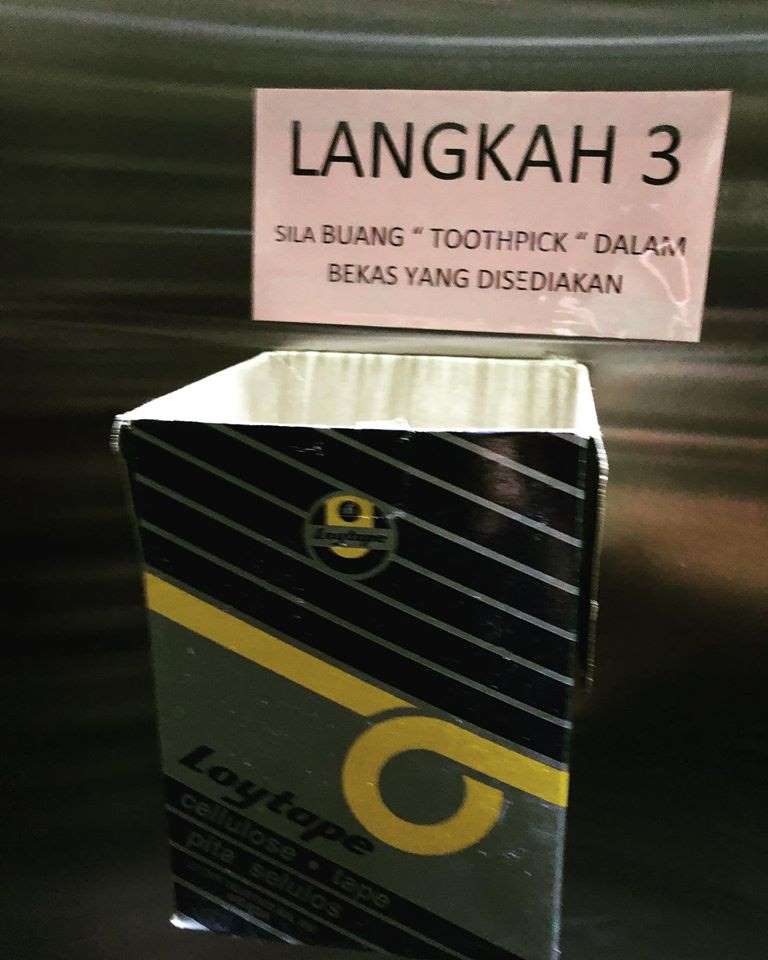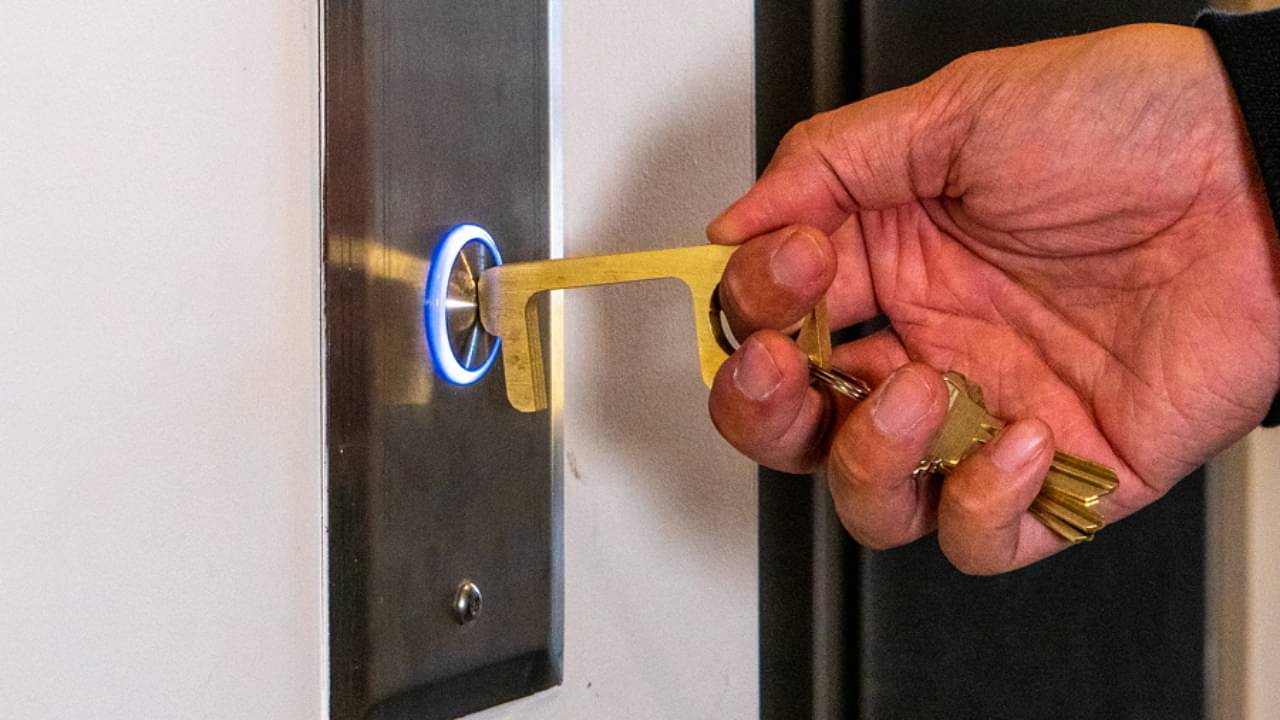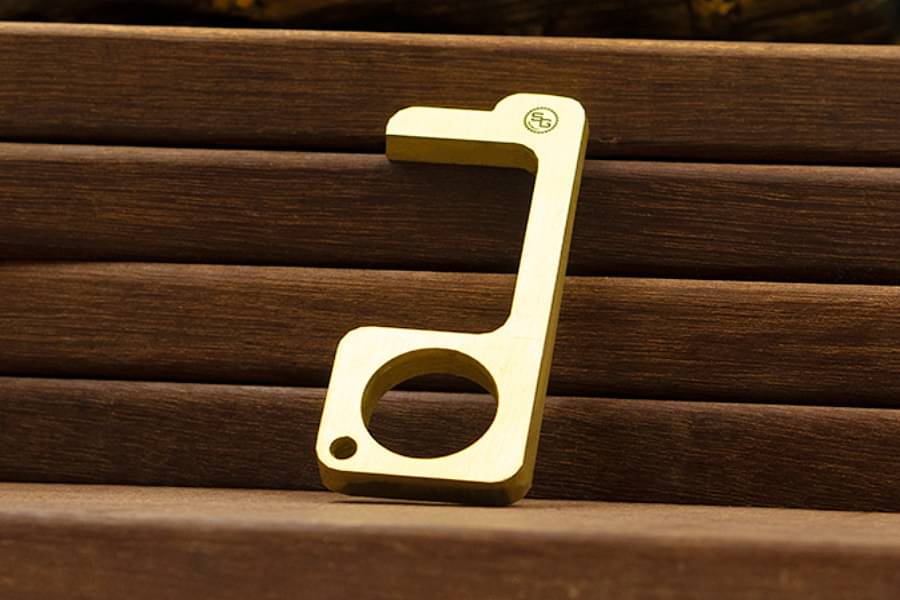Going out to malls to shop for groceries or to run necessary errands during the pandemic is a totally different experience from when we weren’t so cautious about what we touch. Malls and other establishments have been coming up with creative ideas to combat the spread of COVID-19, like installing alternative elevator solutions.

Source: Bangkok Post 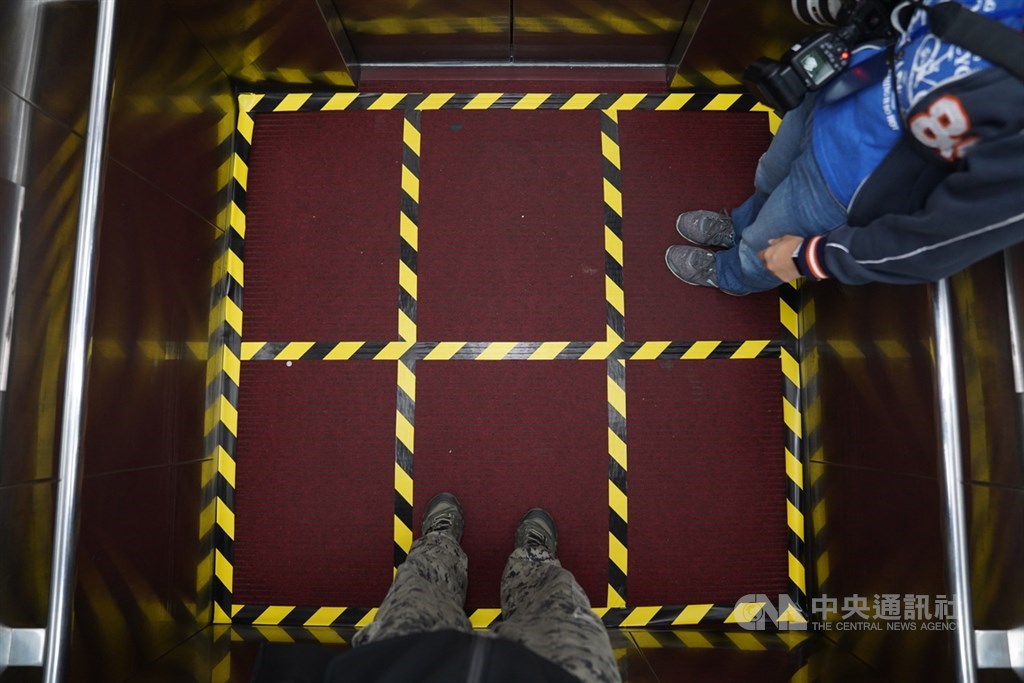
Source: Focus Taiwan 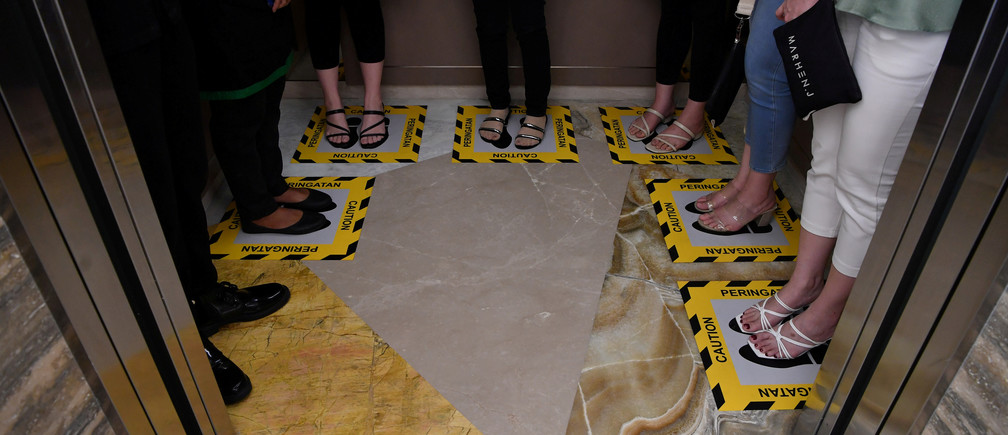
Source: Weforum
While there are some pretty standard solutions like marking individual spaces in an elevator to encourage social distancing, there are some other pretty great solutions to stop people from touching elevator buttons. Here are the few I found that we should all look into for our own solutions.
Foot pedals
A shopping mall in Bangkok called ‘Seacon Square 1’ made waves on the internet for installing creatively-placed leg pedals for their elevators, allowing shoppers to avoid touching lift buttons. The solution was installed after Thailand began easing its lockdown measures to revive its economy.
To enter the elevator, you’d have to press a foot pedal to indicate whether you want to go ‘Up’ or ‘Down’, replacing the up and down buttons you’d usually press. Once you get inside, the usual elevator buttons indicating floor numbers are replaced by foot pedals.
You’d just need to tap your feet on the pedals to indicate which floor you would like to go. The elevator also has indicators for where you can stand to further distance yourself from other people in the elevator. Shoppers will also be able to sanitise their hands before they go in.
This creative elevator solution is also seen used by Jakarta’s LRT Station elevator. The station’s Twitter account posted their addition of their ‘foot switch technology’, saying that they are “always keeping up with health and cleanliness”.
Toothpicks
For elevators that still don’t have foot pedals (yet!) a great solution is to do what this apartment in Bandar Baru Bangi has done. Stick a bunch of toothpicks in a pad of styrofoam for people to pick out and press their elevator floor button. They can then put the toothpick in a ‘trash bin’ provided.
This simple yet effective method can help reduce the amount of button touching in an elevator, and it subsequently reduces the spread of disease. For places that have yet to install cool foot pedal tech, try following their footsteps and help install the toothpick method for your building.
Although it’s not the most environmentally friendly solution, the same can be said about single-use face masks. While both are bad for the planet, not opting for a preventive measure at all would be worse for your health. The solution is good for a short term measure before the building can invest in foot pedals. Cloth masks are a good alternative if you don’t want to use too many single-use masks, but they might not work as well, depending on how it’s made.
‘Hygiene Hook’
‘Hygienehook’ is the invention of designer Steve Brooks and lets you open a door without touching the handle https://t.co/V4BuTobjrR pic.twitter.com/lCUabH62cw
— Reuters (@Reuters) April 11, 2020
It’s about the same idea as the toothpick solution, but it’s great for elevators or door handles that don’t yet have either of the above solutions. Designer Steve Brooks has invented ‘Hygiene Hook’, a literal hook that helps you open doors without needing to touch the handles.
It’s made from a non-porous material, which makes it easy to clean. It’s also a 3D-printed item.
“Everyone has to use their little finger or find the bit of the door that nobody’s touched,” said Brooks.
The hook can also be used to press elevator buttons, and it’s small enough to fit in a pocket so you can carry it around when you go out. However, these babies sell at a whopping USD18 (RM78).
While it’s a little pricey, the ‘Hygiene Hook’ is one of hundreds of gadgets dreamt up in recent days and weeks to help prevent people from spreading the coronavirus. Companies like the Mercedes F1 team and Dyson have created their own products to help COVID-19 patients.
“Global upheaval often spawns new products and innovation,” writes Josephine Mason, Peter Henderson, Luiza Ilie of Reuters, “The current burst of creativity may eventually compare to that seen during World War Two when companies, governments and scientists embarked on projects that had lasting consequences.”
Hopefully we’ll start seeing a few foot pedals here and there as we begin to slowly open up the economy. However, make sure to avoid touching your face if you need to touch elevator buttons.
Other measures include facing the elevator walls, as if someone in the elevator sneezes or coughs, you’re mostly trying to protect your face. If you’re the one coughing or sneezing, do it into your sleeve instead. You should also wash your hands or use hand sanitiser after you use the elevator.

